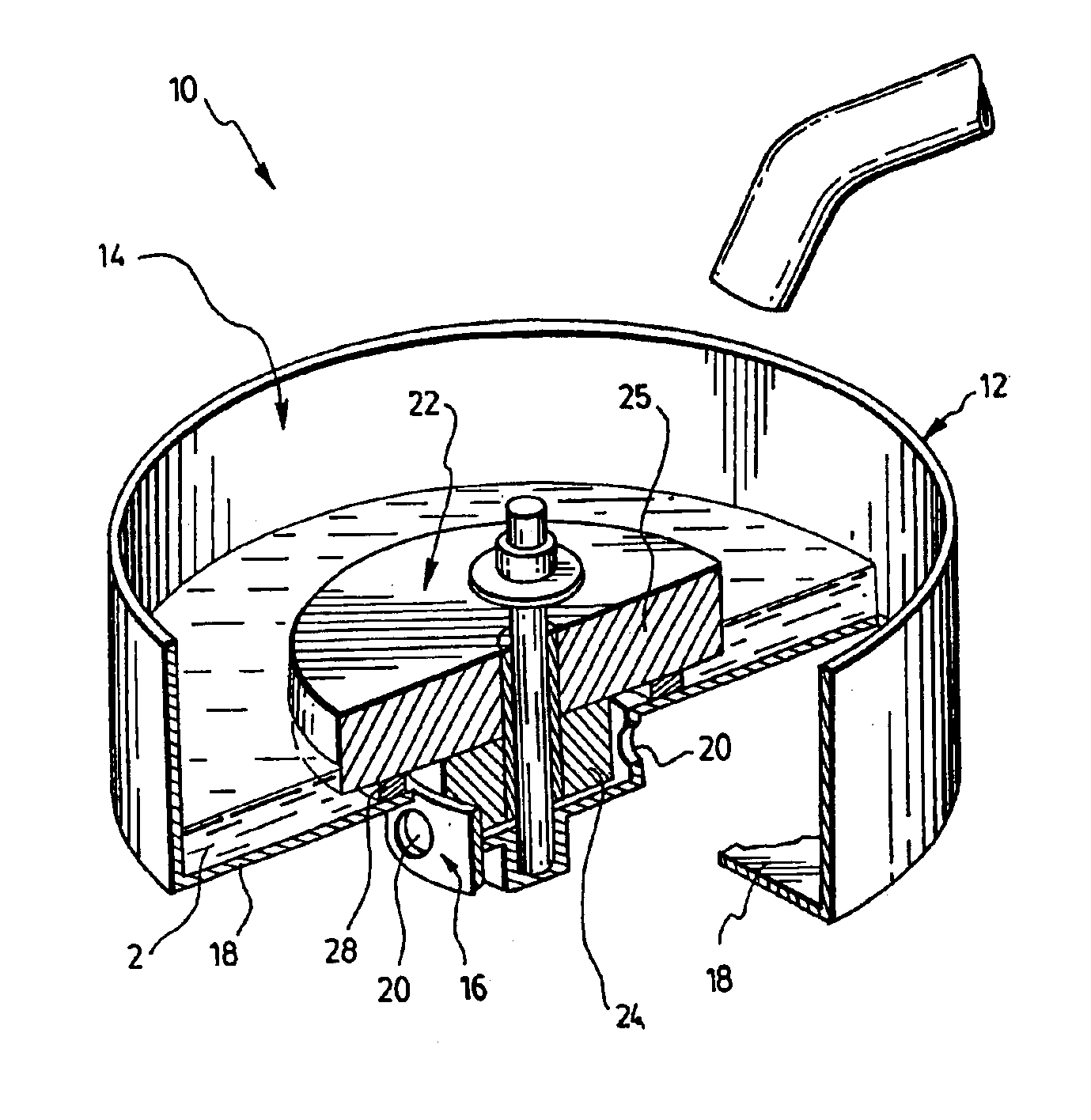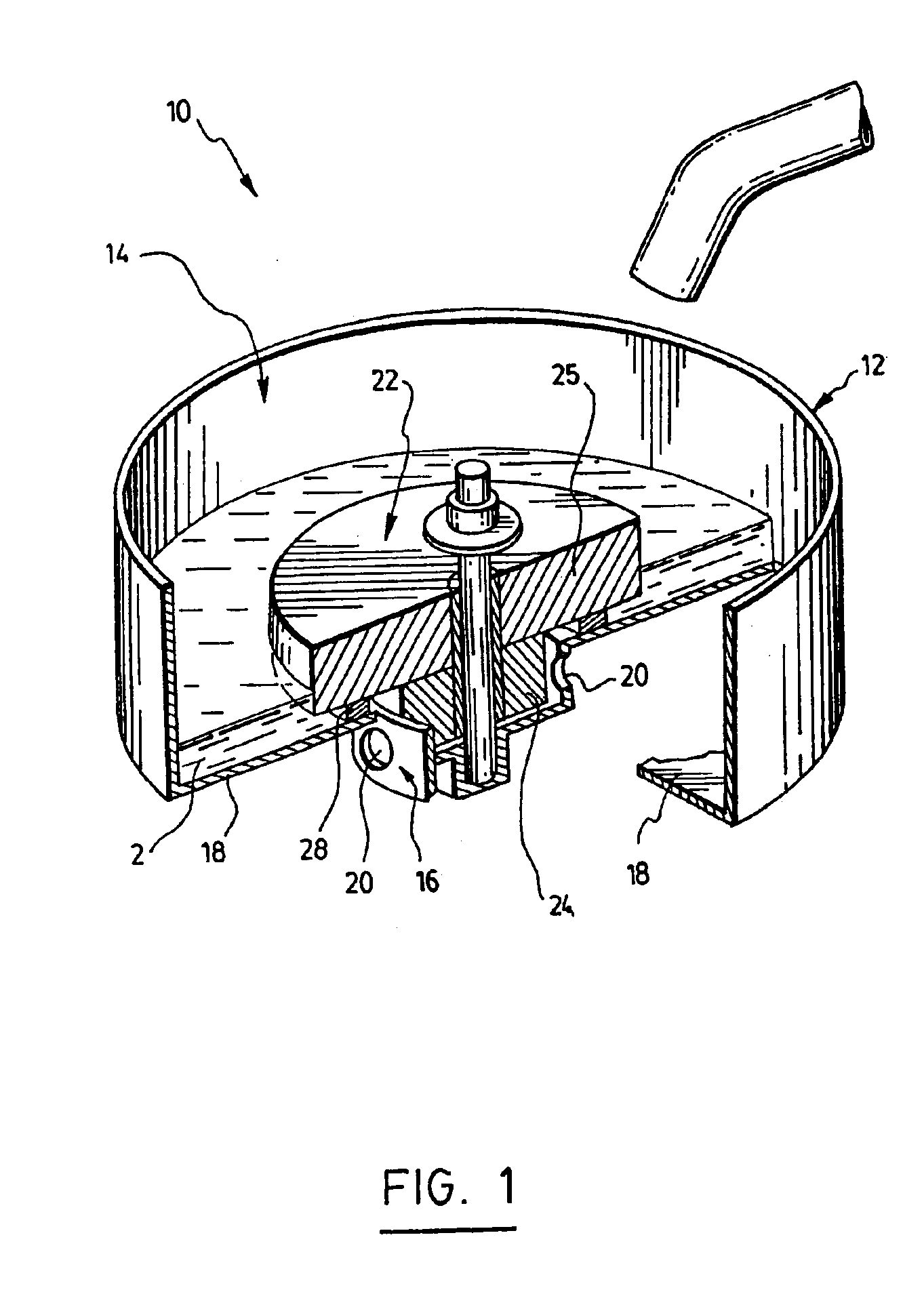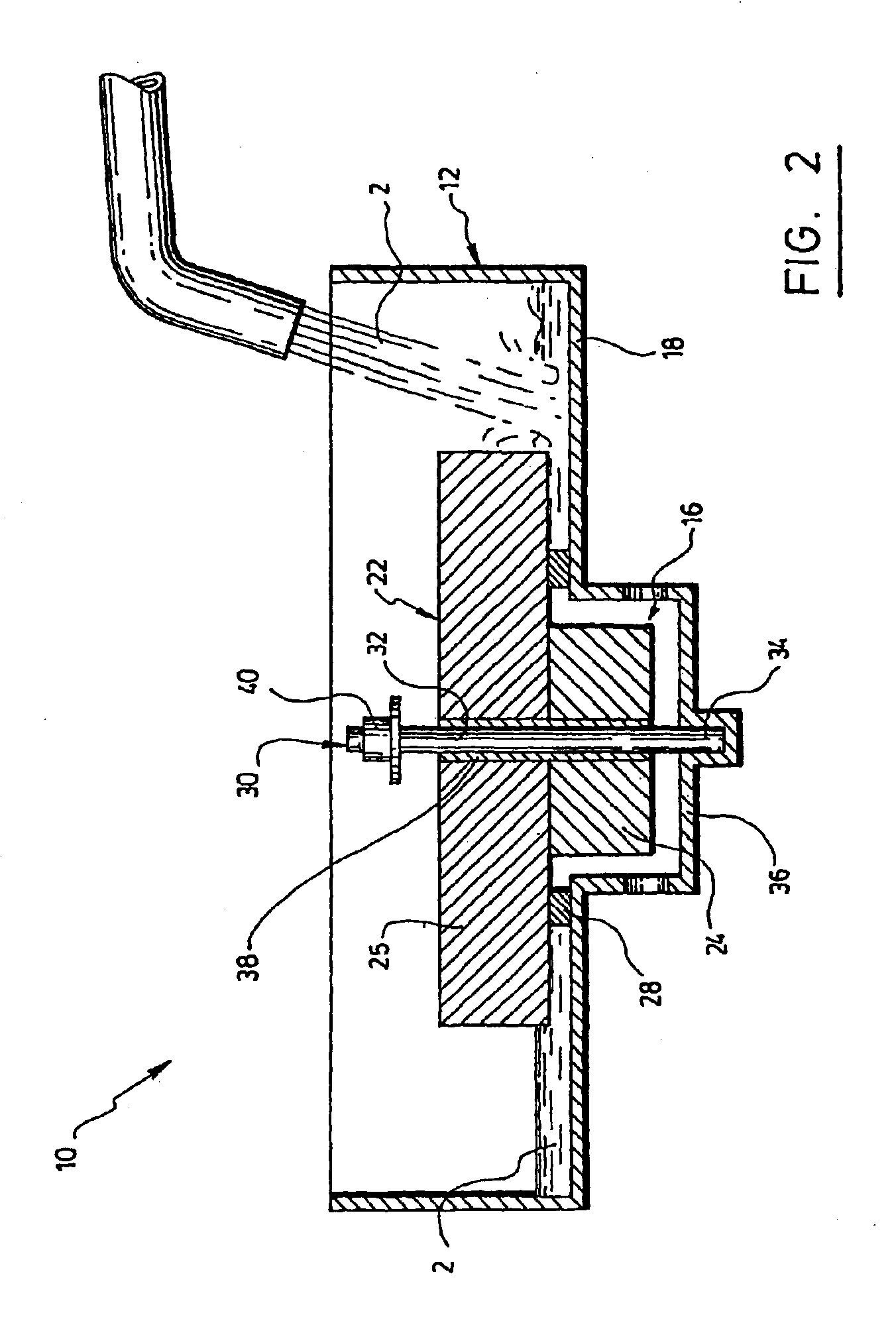Buoyancy flushing apparatus and method thereof
a technology of flushing apparatus and buoyancy, which is applied in the direction of operating means/releasing devices of valves, sewage draining, water supply installation, etc., can solve the problems of float to loose buoyancy, sink to the bottom of the tank, and not provide a great flexibility in relation,
- Summary
- Abstract
- Description
- Claims
- Application Information
AI Technical Summary
Benefits of technology
Problems solved by technology
Method used
Image
Examples
Embodiment Construction
[0040]In the following description, similar features in the drawings have been given similar reference numerals and in order to lighten the figures, some elements are not referred to in some figures if they were already identified in a precedent figure.
[0041]Referring to FIGS. 1 to 9, the buoyancy flushing apparatus (10) comprises a reservoir (12) for accumulating liquid (2), having an inlet (14) for receiving liquid, which inlet (14) consists, in this case, of the open top of the reservoir (12), and an outlet chamber (16) recessed in a bottom wall (18) of the reservoir (12).
[0042]In order to flush the outlet chamber more rapidly and thereby obtain a more important pulse, the outlet chamber (16) preferably includes more than one outlet (20). This mode of realisation could also be used for flushing liquid in more than one direction. As can be appreciated, the preferred embodiment illustrated comprises four of these outlets (20) evenly distributed around the outlet chamber (16). It is...
PUM
 Login to View More
Login to View More Abstract
Description
Claims
Application Information
 Login to View More
Login to View More - R&D
- Intellectual Property
- Life Sciences
- Materials
- Tech Scout
- Unparalleled Data Quality
- Higher Quality Content
- 60% Fewer Hallucinations
Browse by: Latest US Patents, China's latest patents, Technical Efficacy Thesaurus, Application Domain, Technology Topic, Popular Technical Reports.
© 2025 PatSnap. All rights reserved.Legal|Privacy policy|Modern Slavery Act Transparency Statement|Sitemap|About US| Contact US: help@patsnap.com



